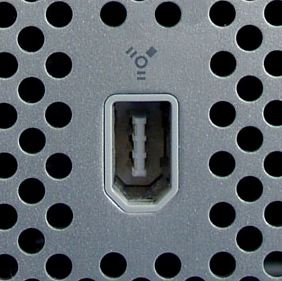No, see, they just relocated the dipstick. You can locate it just behind the steering wheel, right above the driver’s seat.
PEBKAC.
PEBCAC (car and chair lol)
My wife has a 2016 Honda Odyssey, and having grown up working on cars because my dad was a mechanic, I was shocked to learn that there is no transmission fluid dip stick. It’s considered a closed system and never needs to have the fluid changed, allegedly.
It’s a lifetime fluid! For the life of ur transmission! If it’ll make it to 100k miles they could care less what happens after that. When your 16 odyssey needs a transmission at 130 are u gonna put 6k into it or go buy a other car?
The U660F transmission in my wife’s 2015 Highlander doesn’t have a dipstick. Luckily that transmission is solid and easy to service anyway, you just need a skinny funnel to fill it.
New cars absolutely do have dipsticks; they’re the ones designing them.
Notwithstanding the potential for software bugs or other issues inherent with monitoring oil levels only digitally, monitoring just the oil level is not the sole purpose of the dipstick. Being able to physically see a sample of the engine oil is a vital diagnostic tool and can alert an owner or mechanic to a head gasket problem or other oil contamination issue, or if something is grinding metal shavings into the oil, etc.
For what it’s worth I have yet to actually physically see a new vehicle without an oil dipstick. I guess they’re out there, but so far I’ve been lucky. But I have already had quite a few automatic transmission equipped cars without a transmission dipstick cross my path, and that’s already enough of a pain in the ass. If you’re lucky there’s a side plug in the transmission case you can use to check the fluid condition and level (after crawling under the vehicle…) but in a lot of cases there isn’t even that – your only recourse is to drop the transmission pan off entirely, which causes you to lose all the fluid in the process. And you’ll probably also have to replace the gasket while you’re at it. Needless to say, this is an incredibly moronic design decision.
For what it’s worth I have yet to actually physically see a new vehicle without an oil dipstick.
It seems to be mostly a euro thing. BMW stopped using oil dipsticks nearly 2 decades ago. Land Rover also somewhere in the late 00’s.
But I agree it’s a moronic idea. Not only does it prevent you from checking oil condition like you said; if it’s after an oil change, it takes about 15min just to check the level (and another 15 if you messed it up). At $150+/hr shop rates, that adds up.
I used to be a lube tech in a different life 15 years ago and would occasionally see vehicles without dipsticks. Like you said the German brands like BMW and Mercedes but also Chrysler vehicles like the 300 and Magnum had a tube for the transmission dipstick but no dipstick inside of it just a cap on the tube.
At that time, Chrysler was owned by Daimler and shared a lot of stuff with Mercedes.
The NAG1 transmission some 300s used in Europe at least, is in fact the venerable Mercedes 722.6
That transmission was used in the US as well, before they switched to a ZF trans.
I thought it was hilarious when I saw that Briggs and Stratton has been selling small engines featuring “no oil changes needed” (or possible). They advertise that it’s “oiled for the life of the engine” … well, by definition, yes, that’s like saying “if you light a man on fire he’ll be warm for the rest of his life”. These companies are so predatory and transparently trying to turn durable products into disposable replacement services, it’s unbelievable.
Can confirm; I used to manage a hardware store with an attached small engine repair shop. There’s a reason Briggs and Stratton abbreviates so readily to “BS.”
They’ve been trying to do the absolute bare minimum possible to maximize profits and making their machines flimsy and deliberately uneconomical to repair for several decades, now. All I can say is that we ought to be thankful for aftermarket parts.
IMO Briggs started losing their way with those automatic throttle engines that always wind up surging over and over for me. BRRRRrrrr BRRRRrrrr BRRRrrrr over and over.
.
This is a reactionary response, you’re just arguing, slow down a bit.
Do you see a value in a check engine light that tells you something is wrong in between full inspections? This is similar, this is telling you there isn’t enough oil and damage is occurring before you get a chance to inspect the dipstick.
It’s not planned obsolescence unless they also make it unreasonable to service. We already expect to routinely service engines, and they are already very complex and full of sensors, sure this is adding to the complexity but it’s relatively pretty minor.
The argument being made, and I agree with it, is that the benefits of an additional long-serving sensor way outweigh the con of having one additional sensor in your car. You get early warning before damage occurs, you get built in fraud protection when you’re changing your oil at a shady chain, you eliminate a direct access port for dirt to contaminate the oil.
deleted by creator
friend of mine had a ford like this. and it cost more than the car to fix after only 10-15ish years of use. its terrible.
Yeah, that’s just how it goes as the engine becomes more complex, leaving a dipstick there is not gonna change that…
deleted by creator
The article is really lazy about citing its sources.
many cars don’t come with dipsticks anymore. Some sources say
Are these some sources in the room with us?
it’s because automakers don’t trust us to use them, so why make them? (That’s kind of along the lines of rather have it and not need it than need it and not have it, right?) Or maybe it’s some kind of conspiracy to keep drivers coming in for oil changes more often.
This is like an eighth grader padding out a book report.
But in actuality, it’s because a lot of things are going digital.
Tl;dr: Here’s a higher quality source: Why the Reliable Dipstick is Sliding into Obsolescence
This proactive approach helps to avert potential engine damage
Ah yes, the old “you’re too stupid to do anything by yourself, so we kindly prevent you from trying”
Oil is essential. However, those manufacturers that claim you have to change synthetic oil three times a year are full of shit.
I’ve had a car with where the oil pressure sensor failed; combine that with an oil leak, and you quickly have a major problem. So, what happens when the sensor telling you the oil level fails? A dipstick is extremely unlikely to ever fail to work correctly, so…?
You would think an engineer would understand this… I assume this is a decision from management.
Engineers are people like everyone else and some people have no qualms fucking over other people for money.
The Engineer was also told they would get a bonus if they could make maintenance more common and more expensive under the guise of improved technology.
This reads like more AI slop. I miss when Jalopnik had real articles.
I’ve wondered this for a while and this seems like a good time to ask: Do electric cars use motor oil in the same way as an internal combustion vehicle? Like do you need to get oil changes in an all electric the same way and have a need for a dipstick?
Nope. The only fluid I worry about in my EV is windshield wiper fluid.
No brake calipers or power steering onboard?
Hmm do brake calipers age? You’re not really using your brakes during normal driving.
Power steering and other hydraulics would need changing eventually.
Brake fluid is hygroscopic and will accumulate water over time despite being in a nominally sealed system. Water in solution with brake fluid noticeably lowers the boiling point which leads to issues under repeated braking (e.g. down long steep hills) as the fluid boiling means you lose braking capacity in that circuit.
You should ideally be changing the brake fluid every few years (2-3 being the typical recommendation) and that applies even if the brakes are used less often.
You can use DOT 5.1 to significantly increase that wet boiling point, but it’s expensive for normal car use. I usually use it in my motorcycle, since I’ve experienced brake fade on that before, and it’s… Not fun.
DOT 5.1 to significantly increase that wet boiling point, but it’s expensive for normal car use
Huh? In here you can get DOT5.1 for the same price than DOT4. Roughly 10€ per litre, depending on brand and how big bottle you get.
This sounds like an old Mercedes problem: Why even having a dipstick when there isn’t any drain bolt? The Mechanic sucks all the oil from the top using a vacuum. Grime buildup down in the oil pan? Ain’t care! The car will break anyway, once it’s out of warranty.
Woah… I’d say it’s time for a major modification… I wouldn’t be able to deal with owning something so dumb.
I hate all these automatic sensors in new cars. I don’t usually buy new cars, I get ones that are a few years used. Almost all of them have a light on the dash for a “tire error” because the stupid sensor has died and no one in their right mind wants to spend $300 to replace a thing that tells you your tire pressure is low. Plus, the things die in a few years anyway.
I just do the Homer Simpson solution and put a bit of black tape over the tire error light.
$300? A TPS sensor replacement should cost like $75 including the sensor itself.
About $300 is what the mechanics in the area usually charge. The dealership is more.
They are like 50 bucks for all 4 tires on ebay. Just get a wheel shop to install it.
or…just look at the tyres ?
Yeah bro let me just eyeball the difference between 32 psi and 36 psi with my fucking laser eyes.
$70 at Discount Tire.
Each?!?!
Fuck that. I’ll pay $300 for the set and let them do the work for me. LOL
Yeah, $70 for one sensor installed is pretty cheap. Is your $300 number for all 4? Because that’s more expensive than Discount Tire’s price…













